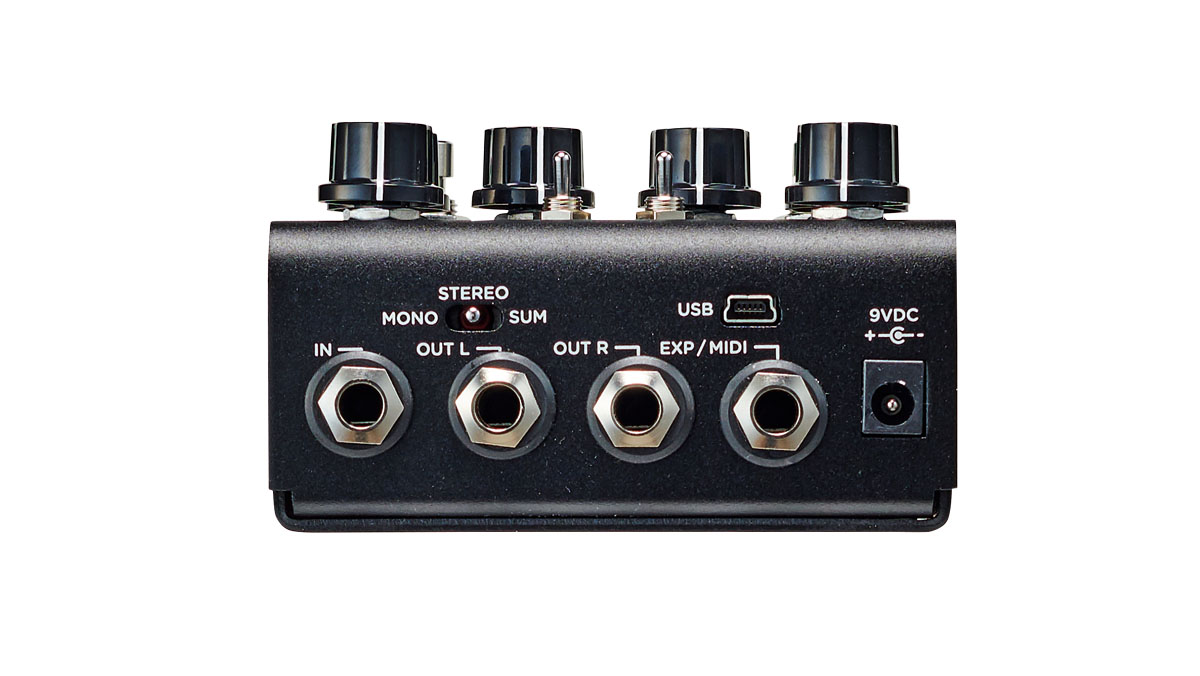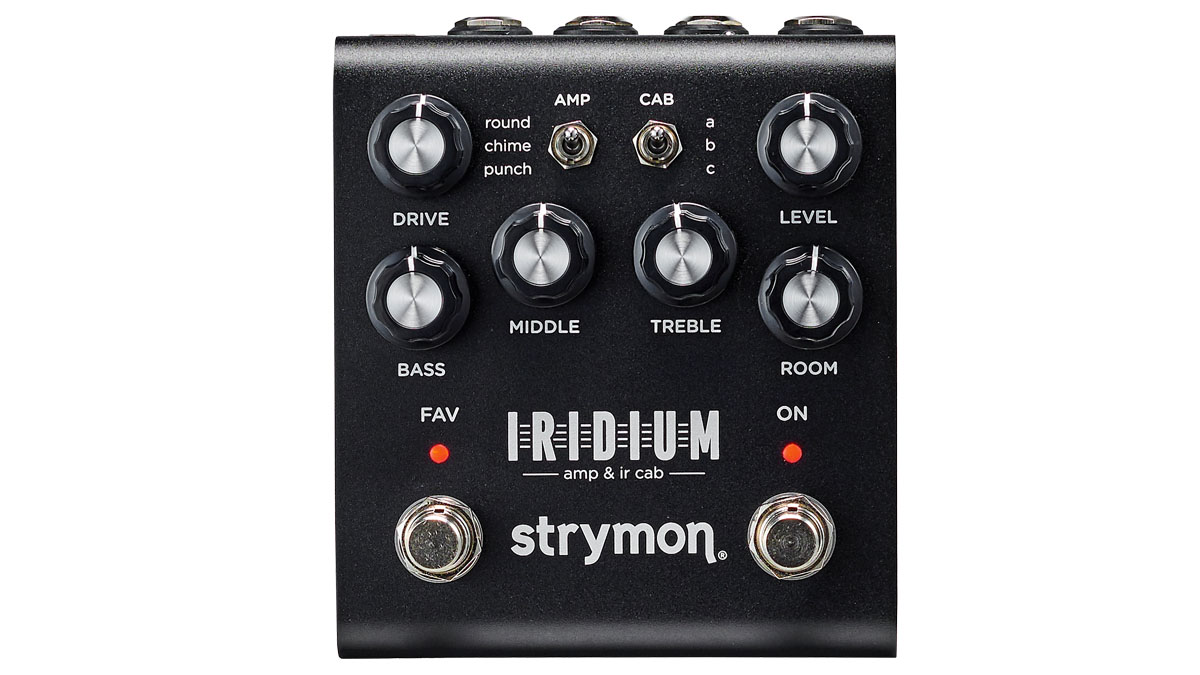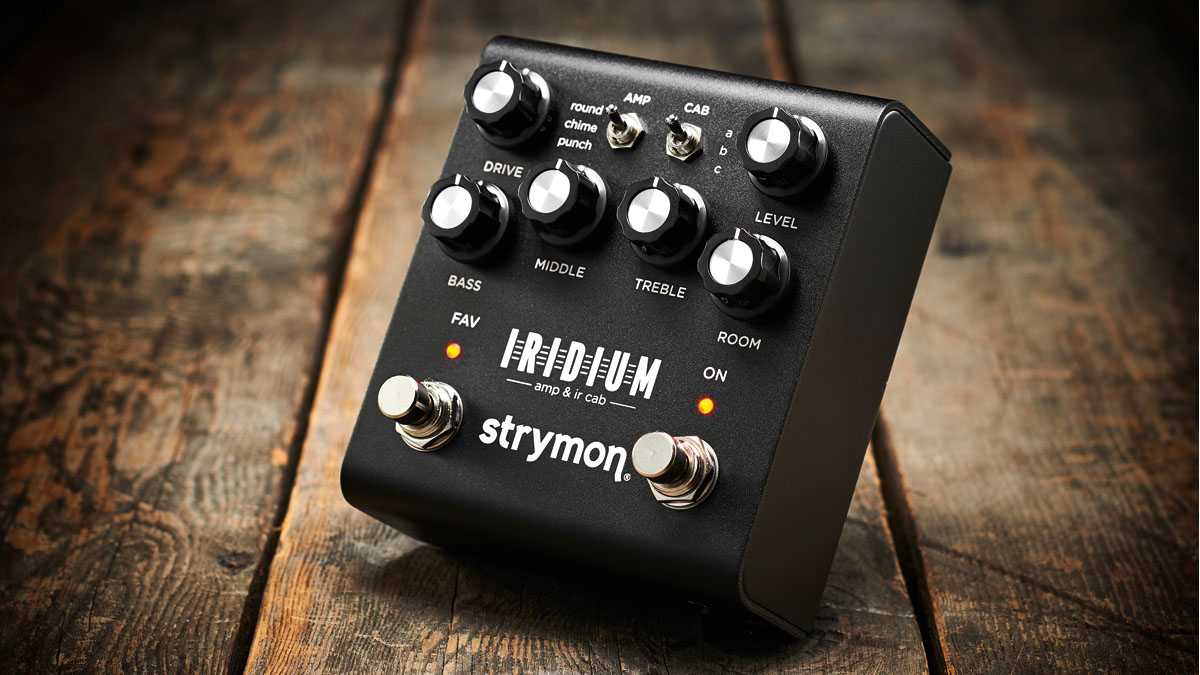Guitar World Verdict
Strymon serves up three classic amp models plus cabinet simulation in a compact, easy-to-use format that's a potential game-changer for gigging and recording.
Pros
- +
Pedalboard-friendly form factor.
- +
Three classic amp sounds expertly rendered.
- +
Choice of highly realistic cabinets.
- +
IR loading.
- +
MIDI control.
- +
Onboard Favorite preset.
Cons
- -
Needs a high-current (500mA) supply.
You can trust Guitar World
Strymon’s Iridium is an amp and cab modeler with added room reverb, designed to deliver the sound of an amp through a cab in a room.
While it can be an integral part of your pedalboard, its role is to be connected directly to a PA for live use or to recording equipment. It also has a headphone output so you can use it for silent practice.
What it provides is three modeled amps with drive and three-band EQ controls, each amp having a choice of three Impulse Response cabinets to be paired with, followed by (optional) room reverb. If you want different cabs, you can replace those onboard with your own using Strymon’s Impulse Manager software.
The amp and cab sections can be independently turned off so you can just use the amps with a different cabinet modeler, or feed the Iridium’s cabs with another source. Plugging in an expression pedal offers volume control or morphing between knob positions and there’s full MIDI remote control of parameters and access to 300 preset locations.

Sounds
The pedal can work in various mono and stereo combinations, its obvious position being at the end of your pedalboard signal chain, although some may wish to follow it with delay or reverb pedals. The analogue JFET input no doubt contributes to playing feel, which has a very amp-like push and pull to it, everything cleaning up naturally with guitar volume.
The Round amp is based on a Fender Deluxe and provides classic Fender clean sound through to the combo’s natural drive. There’s practical tonal sweetening from the tone stack with the midrange adjustment offering the sort of variation you’d hear between different Fender eras: turn it up from a typical ‘black-panel amp’ scoop towards more of a Tweed tone and drive.
As with the other amps, the A cab is the one it’s most closely associated with, and here it’s a 1x12, but we were really taken by the C cab’s 2x10 for more of a Super or Vibrolux flavor. The Iridium cabs are very high quality, in fact, featuring a full 500ms IR never before seen in a pedal.
While all of the amps/cabs sound classily authentic anyway, you can open the whole sound up to whatever degree you need with the sense of realistic space provided by the room reverb
The second amp, Chime, is a Vox AC30 Top Boost with a mid control that works just like the original’s Tone Cut for top end roll-off. The full gain range of the original amp is reproduced but the upper reaches of the gain knob adds a bit extra with the cab choice (including a Mesa 4x12) adding more versatility.
Punch is based on a 100-watt Marshall Super Lead - the classic Plexi model. While a Plexi at full whack sounds glorious, it only goes so far, so Strymon has added extra whomp after two o’clock on the Gain knob, getting towards high gain. If you need more, the Iridium takes drive pedals really well.
While all of the amps/cabs sound classily authentic anyway, you can open the whole sound up to whatever degree you need with the sense of realistic space provided by the room reverb.
Verdict
This pedal is all about the provision of the three most classic amp flavors with a minimum of fuss. Unlike the Kemper, Helix and Fractal’s Axe-Fx where you can navigate the menus for a massive choice of models, the Iridium is sharply focused: it has exactly what’s necessary and no more.
There’s a simplicity and ease of use that has massive appeal. You could simply use it as a tabletop recording tool to instantly give you the sound of a great amp recorded at a decent working volume with professional mics in a nice-sounding room (without the need for amp, mic or room).
Alternatively, you could take advantage of its form factor and integrate it into your pedalboard, turning that ’board into a full rig for headphone practice, for gigging direct into the sound system if you prefer not to use an amp or can’t travel with one, or maybe as a belt-and-braces backup ready for use if your amp goes down. Strymon has identified a need that guitarists didn’t know they had - and has filled it brilliantly.
Specifications

- PRICE: $399, £399
- ORIGIN: USA
- TYPE: Amp modeller and IR cab pedal
- FEATURES: Selectable true or buffered bypass, AMPS: Fender Deluxe Reverb, Vox AC30TB, Marshall Plexi (Super Lead model number 1959)
- CABS: 1x12 Fender Deluxe Reverb, 1x12 Fender Blues Junior, 2x10 Fender Vibrolux, 2x12 Vox AC30-6 open back fawn, 1x12 Custom cab w/ Celestion Blue AlNiCo, 4x12 Mesa/Boogie Half-Back, 4x12 Marshall w/ Celestion G12M-25s, 2x12 Custom cab w/ Celestion Vintage 30s, 8x12 Marshall w/ Celestion T652s
- CONTROLS: Drive, Level, Bass, Middle, Treble, Room, Amp selector switch, Cab selector switch, Audio input selector switch, On footswitch, Favorite footswitch
- CONNECTIONS: Standard input, standard outputs (L, R), EXP/MIDI, USB, stereo minijack headphone ouput POWER: Supplied 9V DC adaptor, 500mA
- DIMENSIONS: 102 (w) x 114 (d) x 44mm (h)
For more information, head to Strymon.
Trevor Curwen has played guitar for several decades – he's also mimed it on the UK's Top of the Pops. Much of his working life, though, has been spent behind the mixing desk, during which time he has built up a solid collection of the guitars, amps and pedals needed to cover just about any studio session. He writes pedal reviews for Guitarist and has contributed to Total Guitar, MusicRadar and Future Music among others.
“The original Jordan Boss Tone was probably used by four out of five garage bands in the late ’60s”: Unpacking the gnarly magic of the Jordan Boss Tone – an actual guitar plug-in that delivers Dan Auerbach-approved fuzz
“This is a powerhouse of a stompbox that manages to keep things simple while offering endless inspiration”: Strymon EC-1 Single Head dTape Echo pedal review












